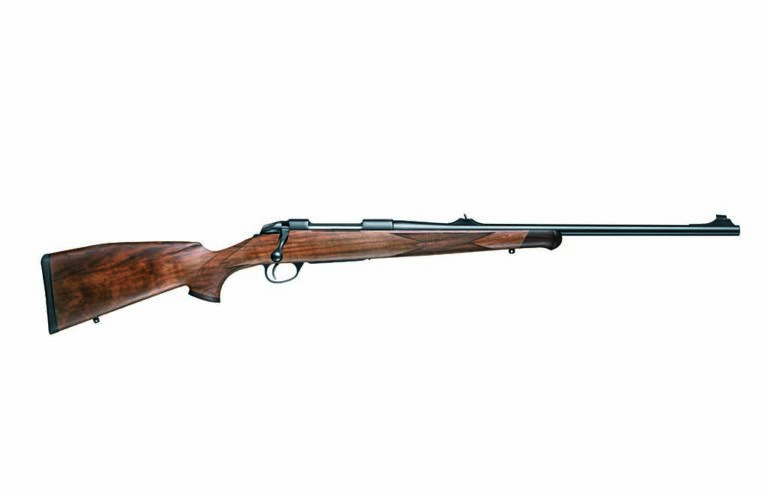
Sako’s Model 85 Bavarian sports a very unique action and stock combination that pair exceptionally well for in-field accuracy.
What sets the Model 85 Bravarian apart:
- Three locking lugs
- Control-round feed
- Mechanical ejection
- Three-position safety
- Traditional German stock — hog back comb and Schnabel forend
- More vertical pistol grip with pronounced palm swell
There aren’t many ways to improve upon the legendary 6.5×55 Swede, but wrapping it in the fine Finnish craftsmanship of a Sako rifle probably doesn’t hurt. I recently had the privilege to find out when Sako sent me a “Swede” in their Model 85 Bavarian to review.
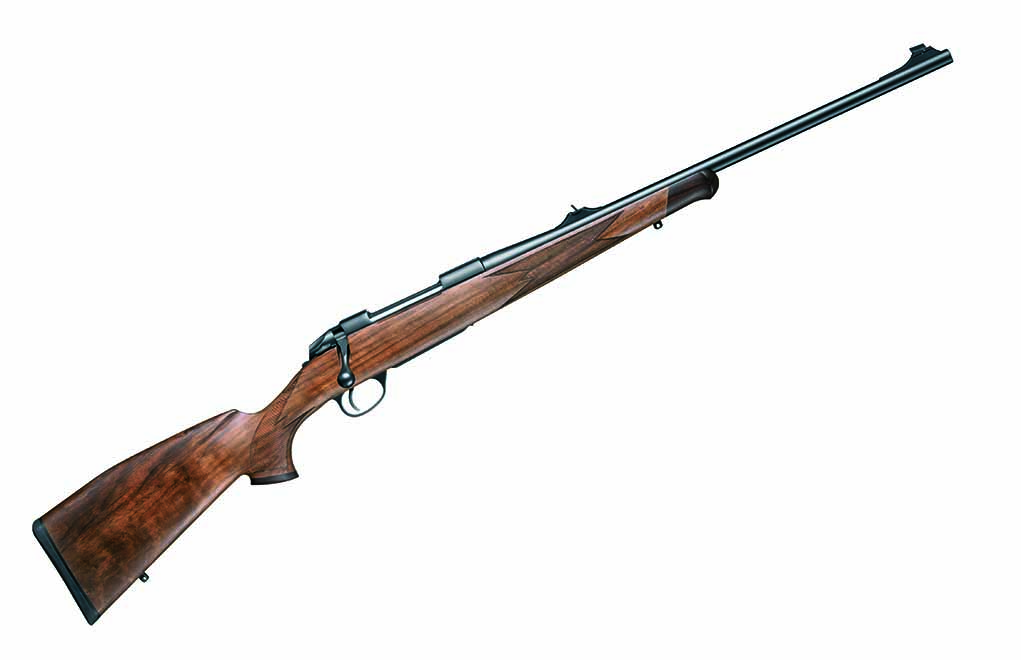
The first thing you need to know about Sako is that they didn’t start building firearms for fun. They built them to save their homeland, Finland, from overwhelming Russian aggression. Such motivation produces the kind of firearms manufacturing quality control that only a country’s sovereign survival inspires. Luckily for me, I didn’t have to brave a Russian winter to test the Sako chambered in the aptly-selected Scandinavian military cartridge. No, I chose to head south for my winter weapons review to Kimberly, South Africa, much to the dismay of the local zebra, kudu, steenbok and warthog populations.
Reviewing a European rifle chambered in 6.5×55 Swede isn’t rare.
“The Swedish Mauser caliber is a very popular hunting cartridge in our neighbor country, Sweden,” said Philip Jones, Product Manager of rifles and ammunition, Beretta USA Corp. “Sako has been selling these rifles there for a long time and, today, Sako and Tikka are the No. 1 hunting rifles in Sweden, so I think Sako has very good knowledge how to build the best 6.5×55 rifles offered today.”
Speaking of Tikka, and this might settle or even start a few spirited discussions around elk camp: According to Jones, a Sako-built rifle is not simply a dressed-up Tikka. They’re two completely different rifles. Jones was direct:

“In regard to manufacturing process, the largest difference [from Tikka] is that the Sako 85 bolt starts as a hammered preform with the bolt handle,” Jones added. “When we machine the bolt of the Model 85, the whole bolt body is one single piece of metal, including bolt handle. With Tikka, we manufacture the bolt body separately from the bolt handle, which is attached later. Feature-wise, there are more differences, such as the Sako 85 has three locking lugs, is control-round feed, has mechanical ejection and uses a three-position safety. Also, we do not use synthetic parts in the barreled action or in magazines as we do on Tikka rifles.”
The Best From The Bavarian
Within the stable of Sako’s fine rifles, the Bavarian stands out.
“We offer many rifles in 6.5×55 caliber,” said Jones. “But the uniqueness of Bavarian rifle is in the stock.”
More Rifle Posts:
- Aussie-Style Accuracy With The Lithgow LA102
- Gun Review: Proof Research Switch-Barrel
- Mauser’s Money-Wise M18 Bolt-Action
- Accurately Extending Your Hunting Range
- America’s Rifle: The Remington Model 700
Why? Because of its German influence, which is an interesting twist, because Finland ended up fighting more than the Russians late in WWII — they chased off the Nazi’s as well.
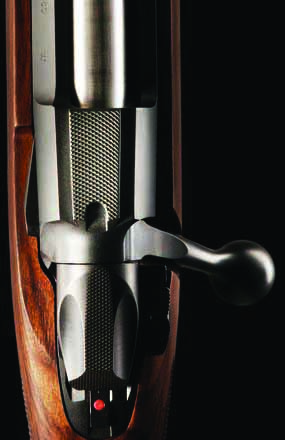
“The stock has very traditional German features, like the ‘hog back’ rear stock comb and, as they call it in Germany, (a) Schnabel-style forend,” he said. This design favors the use of traditional iron sights, which the rifle had, and a thin, long wood signature. On the range and in the field, I preferred the ergonomics of a thinner stock, finding the rifle easier to carry, point and position in a variety of hunting situations.”
Jones expanded on the difference in the Sako 85 Bavarian from other Model 85s, and the subtle changes played well in the field for me.
“The pistol grip is more vertical compared to our other traditional wooden stock models, and it has a very pronounced palm swell,” said Jones. “All Bavarian rifles have hand-detailing on the edges of the checkering patterns, adding one nice unique detail. Also, the length of pull 14.6 inches is slightly longer compared to our other traditional wood stocks, which range from 13.5 to 14 inches in length of pull.”
The rifle was easily too long for me. I’m barely 5 feet, 5 inches tall, and my length of pull stretches at 12.5 inches. Still, on numerous occasions, I was able to pull the long-stocked, long barreled (22.5 inches) Sako from my tucked and seated position, load it, shoulder it and fire accurately on moving targets.
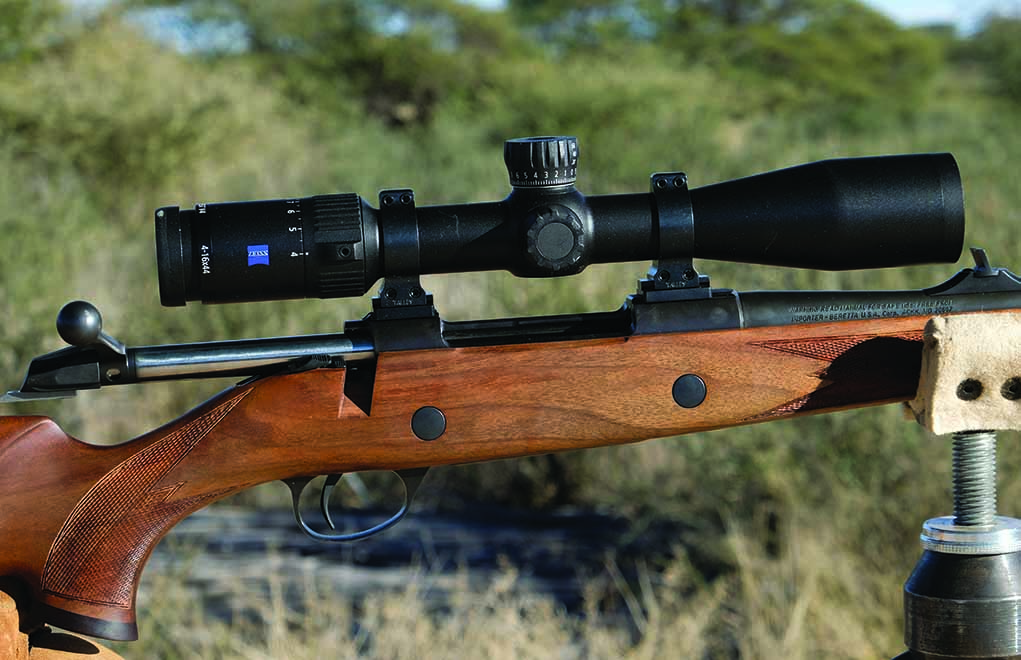
To my point, the wood stock’s shape and enhancements weren’t simply aesthetically pleasing, they influenced my ability to engage dynamic game with the rifle, and that’s a big deal on a safari, elk hunt, or any other hunting application.
The palm swell and pistol grip angle helped me place the rifle properly to shoot quickly on animals in motion. The ergonomics of the stock begged me to actively hunt with the sharp checkering, giving me a firm grip, and the as-advertised larger palm swell giving my hand plenty of real estate to anchor into a strong grip in uncontrolled shooting situations, lending credibility to the idea Sako intended this rifle for hunting and not bench rest work. It’s as if the rifle wanted to go on a safari, with or without me.
Indeed, the Bavarian was, according to Sako, a perfect choice for my safari.

“(The) Bavarian is very good option for plains game in Africa,” said Jones. “A couple of main reasons for choosing it are: It offers mechanical ejection, which is a must when traveling with a rifle in remote places so that the ejection can never fail like can happen with the plunger type ejection; and, it offers quick target acquisition via open sights. If optics are damaged during the hunt or in traveling, the rifle is still a perfectly capable tool for hunting.”
These two keys points focus on what you need your rifle to do above all else — work. Sako’s reputation for high quality is built upon manufacturing a rifle meant to work in the most arduous environments, whether it’s on a hunt or the front lines of combat. Let’s take a closer look at what makes a Sako different from other bolt-action rifles, including the Mauser-style action.
What Sets Sako Apart?
According to Jones, Sako 85 rifles have a controlled-round feed action, but it’s designed differently compared to the Mauser 98 system while still achieving the same reliability.

“The Sako 85 bolt face has an opening on the bottom, where the cartridge can go from the magazine and the Sako-style extractor will keep the cartridge in the bolt face no matter what position the rifle is,” he said. “The ejector placement in the bottom middle of the bolt is also quite unique to the Sako 85. The Sako 85 control-round feed is, in every essence, a control-round feed as is the Mauser version — they both do the same thing. Then, when compared to a normal push-feed action, this control-round feed has clear benefits in difficult shooting situations: If the bolt is cycled when moving with the rifle, it offers a much more reliable cartridge feed into the chamber.”
My experience with the Sako action has proven it to be reliable, but in my opinion — mechanically speaking — it doesn’t equate to same performance of a Mauser-based traditional controlled-round feed action. It is, however, very different, and in my limited experience better than a standard push-feed action. Regardless, both push- and controlled-round feed actions work in the hands of a rifleman who use them properly.
Both push- and controlled-round feed actions have disadvantages and advantages, and I was more impressed with the ergonomics of the Sako stock — it’s the most accurate 6.5×55 Swede I’ve ever shot. On numerous occasions, in low and high stress situations while on my safari in Africa, the Sako rifle never failed to cycle, extract, load or place the bullet precisely where I aimed it.
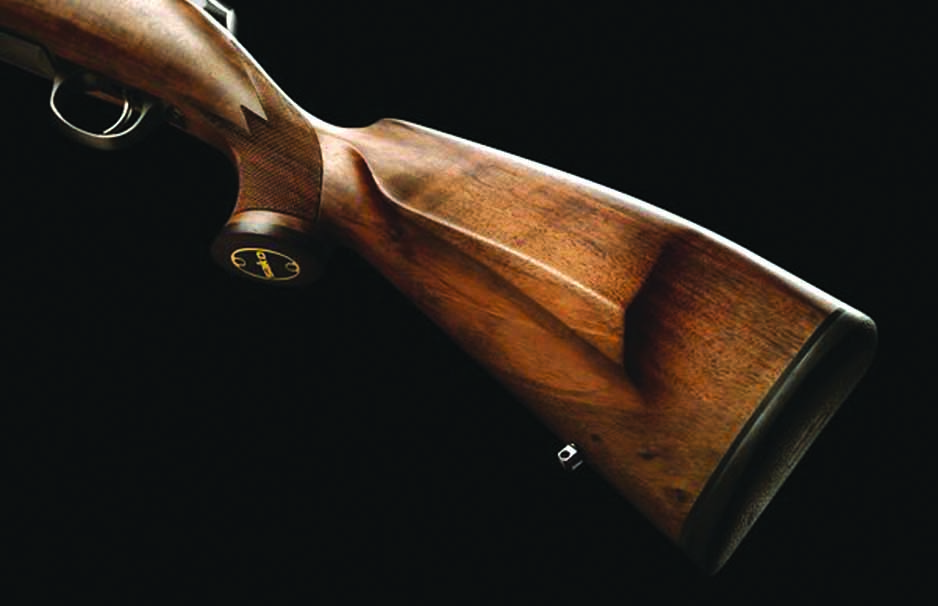
The Sako 85 Bavarian I carried had the longer 22.5-inch barrel, and wisely, it sported a 1:8-inch twist rate to stabilize the kinds of bullets I’d need to maximize the 6.5×55 Swede’s world-class long-range accuracy.
On top of this Sako I used a Zeiss V4 4-16x50mm riflescope and Talley rings. One note to the quality of the scope and rings: My rifle, which bounced around on a 16-hour flight from Virginia to Kimberly, South Africa, only needed one shot on the range to verify zero before we hunted in South Africa. The high-quality glass inside that Zeiss optic paid off on my zebra hunt when I had to shoot in low-light conditions with sunset coming, the animals under the shade of several Acacia trees, and the zebra’s striped camouflage working quite well on my depth perfection.
But Does It Shoot?
How does the Sako shoot? In short, like its $1,998 price tag suggests it ought to, the 85 Bavarian is a knock-out. After shooting a variety of ammunition from Hornady, Nosler and Norma, I settled on the 156-grain Norma Oryx for Africa because of its heavier bullet weight, construction and superb accuracy.
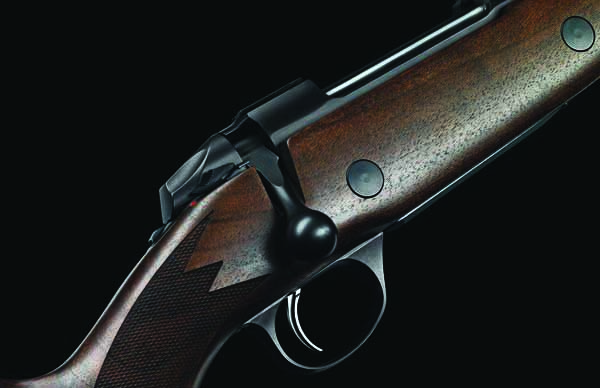
Earlier in the year I used the same ammunition to take an Idaho black bear at 90 yards with a CZ 557 chambered in 6.5×55 Swede, so when the Norma ammo grouped well again in this rifle, I felt confident it would work on whatever Africa had in store for me. I was right.
From the bench to the South African high desert mountains — to low-light stalks in heavy brush, instant jump shots on 200-pound warthogs in a full sprint, bipod-assisted 200-meter shots on Zebra, Steenbok, and Kudu — it worked.
For hunters, a test where the final grades are based on tags filled, taxidermy bills created and memories made are the best grades any rifle can ask for.
The article originally appeared in the September 2018 issue of Gun Digest the Magazine.

Next Step: Get your FREE Printable Target Pack
Enhance your shooting precision with our 62 MOA Targets, perfect for rifles and handguns. Crafted in collaboration with Storm Tactical for accuracy and versatility.
Subscribe to the Gun Digest email newsletter and get your downloadable target pack sent straight to your inbox. Stay updated with the latest firearms info in the industry.

![Best Concealed Carry Guns In 2025 [Field Tested] Wilson Combat EDC X9S 1](https://gundigest.com/wp-content/uploads/Wilson-Combat-EDC-X9S-1-324x160.jpg)


![Best 9mm Carbine: Affordable PCCs [Tested] Ruger Carbine Shooting](https://gundigest.com/wp-content/uploads/Ruger-Carbine-Shooting-100x70.jpg)
![Best AR-15: Top Options Available Today [Field Tested] Harrington and Richardson PSA XM177E2 feature](https://gundigest.com/wp-content/uploads/Harrington-and-Richardson-PSA-XM177E2-feature-100x70.jpg)

A Sako85 Bavarian in .308 will make a nice addition to my rifle collection.
I’m very interested in this rifle, but I also wondered about that controlled round feed claim, so I went to the source. I asked at what point in the bolt’s travel it has full control of the cartridge. They didn’t really answer my question, but since I’m a southpaw, they did manage to make the real answer of little interest to me.
—————————————————-
Hello John:
Thank you for contacting Beretta Customer Support.
All Sako rifles, with the exception of the A7, are controlled feed. However, Sako 85 Bavarian models are not imported in LH configuration. The extractor maintains full control of the cartridge from loading to unloading.
Best regards,
Beretta Customer Support